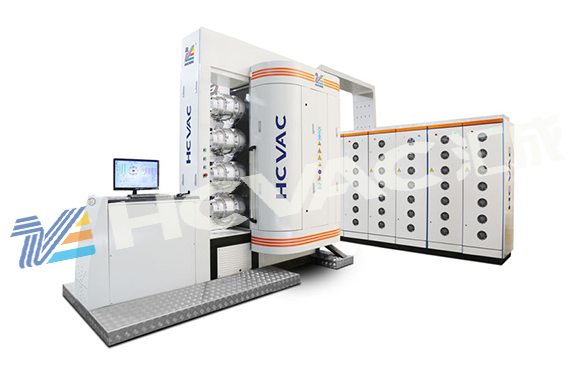Preparation before vacuum pipeline evacuation and introduction to pipe evacuation of pvd coating machine are the processes in the early stage of vacuum coating machine coating. The workpiece needs to be coated, and the cleaning process needs to go through in the early stage. If the customer chooses to clean the coating process in the pvd coating machine, then vacuum pipeline evacuation is the initial stage of pvd coating machine coating. Many people are very interested in the preparation before vacuum pipeline evacuation and the introduction of vacuum pipe fitting evacuation process. Today, the vacuum editor will introduce in detail:

ICrl8NigTi is used as the material for the suction process pipeline, which is also the same as the material used for the suction pipeline. The stainless steel made of this material has low gas output, good weldability and brazability, and stable chemical properties. The pipe rack (or platform) used in the evacuation equipment should ensure the stability and stability of its working state.
Preparation for evacuation:
(1) The main pump unit and leak detection unit shall be debugged and qualified by professional personnel;
(2) Prepare helium and high-purity nitrogen for replacement;
(3) Prepare circulating water (cooling water);
(4) Prepare power supply and cables;
(5) Prepare auxiliary supplies for evacuation and leak detection, mainly including standard leaks, leak detectors, vacuum grease, vacuum sealing mud, spray guns, airbags, etc. Standard leaks and gauges should meet measurement requirements;
(6) Install the exhaust process pipe and connect it to the main pump unit and leak detector. During installation, evenly apply force to the bolts and tighten them symmetrically to ensure reliable sealing;
(7) Install a pipe rack or platform that supports the extracted pipe fittings;
(8) Install vacuum gauges and gauges;
Introduction to the Vacuum Tube Evacuation Process of Vacuum Coating Machine. The following are two different evacuation situations: "re vacuuming" in 1995 and 1999, and "reducing pressure rebound and partially restoring vacuum degree" in 2002.
Introduction to the process of re vacuuming
Installation of the extracted pipe fittings on the rack: Install the process evacuation valve in a suitable position and conduct leak detection here. Use helium injection method to determine the location of the leak hole based on the position of the spray gun, and use the box cover method to detect any suspicious points. After passing the inspection, close the valve between the process suction pipe and the leak detector. Close the process valve and stabilize for 2 minutes. Record the vacuum pressure of the tooling tube at this time, denoted as pl; Open each group of sealing valves separately, stabilize for 1 minute, and record the vacuum pressure between the interlayer and the fixture pipe at this time, denoted as pZ. The volume of the interlayer of the pipe fittings, the volume of the first fixture pipe, is filled with gas to the interlayer of the fixture and pipe fittings, and nitrogen replacement is carried out before evacuation.
Installation of heating and temperature measurement device for
pvd coating machine: temperature sensors are installed on the outer wall of each group of intermediate pipe fittings, and several heating plates are evenly placed at the bottom. The external insulation is covered with asbestos wool, and the heating chamber is sealed. The heating temperature of the pipe fittings is controlled between 120oC and 150oC, The temperature at the sealing valve should not exceed 60 "C (with cooling water circulation) and records should be kept. Pipe heating: connect the sealing valve cooling water, pass through the water, and heat the product pipe fittings. After the temperature rises to the specified value, keep the insulation for 48 hours.



